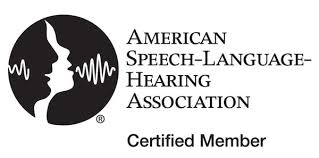
To use in your report, highlight text first then:
COPY
WINDOWS: Ctrl + C
MAC: Command + C
PASTE with no Formatting
WINDOWS: Ctrl + Shift + V
MAC: Shift + Option + Command + V
PASTE with Formatting
WINDOWS: Ctrl + V
MAC: Command + V
**Use for templates with tables**
Clinical Assessment of Language Fundamentals-Fifth Edition (CELF-5)
The Clinical Evaluation of Language Fundamentals- 5 (CELF-5) was developed as a diagnostic assessment of receptive and expressive language skills in children ages six through twenty-one. It taps the receptive and expressive skills in morphology, syntax, semantics, and memory. The CELF-5 provides a Receptive Language Composite and Expressive Language Composite, as well as a Total Language Score. Items are listed in order of difficulty based on the performance of children involved in the normative studies. Scaled scores have a mean of 10 and a standard deviation of 3. Scaled scores falling between 7 and 13 are within the average range of abilities when compared to XXX’s same age peers.
The Core Language, Expressive and Receptive scores are calculated based on performance on a variety of subtests including, Sentence Comprehension, Linguistic Concepts, Word Structure, Word Classes, Following Directions, Formulated Sentences, Recalling Sentences, and Understanding Spoken Paragraphs.
A summary of XXX’s performance and scores on the subtests of the CELF-5 are listed below.
A summary of XXX’s Index Scores on the CELF-5 are listed below. Standard scores have a mean of 100 and standard deviation of 15. Scores falling between 85 and 115 are within the average range of abilities when compared to ’s same age peers.
| Subtest Description | Scaled Score | Percentile Rank |
| The Sentence Comprehension subtest evaluates student’s ability to interpret spoken sentences of increasing length and complexity and select a picture that illustrates referential meaning of each sentence. | ||
| The Linguistic Concepts subtest evaluates the student’s ability to interpret spoken directions with basic concepts which requires logical operations such as inclusion and exclusion, orientation and timing, and intensifying mentioned objects from among several pictured choices. | ||
| The Word Structure subtest evaluates the student’s ability to apply word structure rules (morphology) to mark inflections, deviations, and comparisons, and then select and use appropriate pronouns to refer to people, objects and possessive relationships. | ||
| The Word Classes subtest evaluates the student’s ability to understand relationships between words based on semantic class features, function, or place or time of occurrence. | ||
| The Following Directions subtest evaluates the student’s ability to interpret spoken directions of increasing length and complexity and follow the stated order of mention of familiar shapes with varying characteristics such as color, size or location and identify from among objects that were mentioned. | ||
| The Formulated Sentences subtest evaluates the ability to formulate complete, semantically and grammatically correct, spoken sentences of increasing length and complexity using given words and contextual constraints imposed by illustrations. | ||
| The Recalling Sentences subtest evaluates the student’s ability to listen to spoken sentences increasing length and complexity and repeat sentences without changing word meaning and content, word structure (morphology) or sentence structure (syntax). | ||
| The Understanding Spoken Paragraphs subtest evaluates the student’s ability to (a) sustain attention and focus while listening to spoken paragraphs of increasing length and complexity, (b) create meaning from oral narratives and text, (c) answer questions about the content of the information given, and (d) use critical thinking strategies for interpreting beyond the given information. The questions probe for understanding of the main idea, memory for facts and details, recall of event sequences, and making inferences and predictions. Reading Comprehension provides a parallel format for probing text comprehension. |
Based on this assessment, XXX’s receptive and expressive language abilities were below/within/above the expected range for XXX’s age. XXX displayed strength in: XXX displayed delays in:
| Standard Score | Percentile Rank | |
| Core Language Score | ||
| Receptive Language Index | ||
| Expressive Language Index | ||
| Language Content Index | ||
| Language Structure Index |





